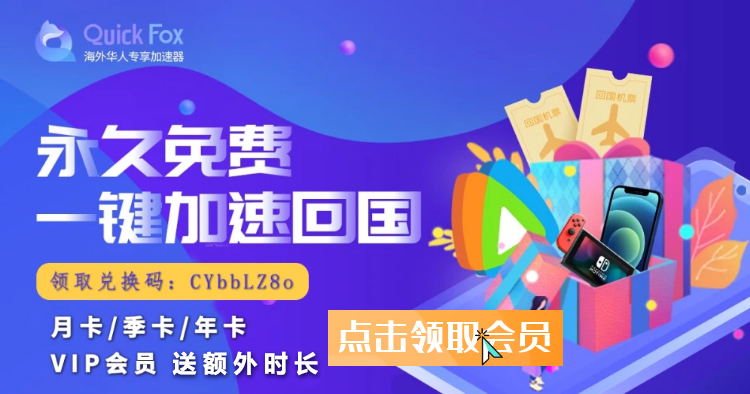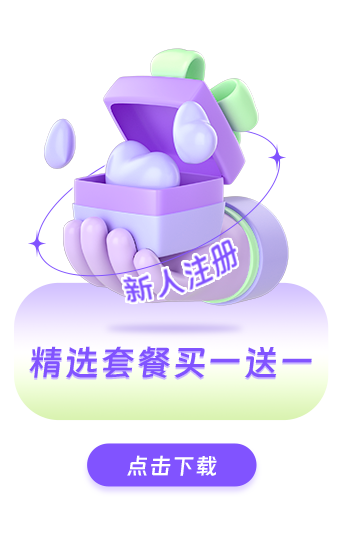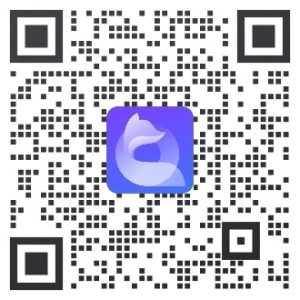The requirements for part-time work for international students studying in the United States are very strict, but what are the options for many students who want to work part-time?Introduction to the requirements for studying and working in the United StatesInternational students working in the United States, ,Studying and working as a graduate student in the United States, ,Can I work while studying in the United States?, ,Things to note when studying and working in the United StatesThe problem.

Study and work conditions in the United States
CPT (Curricular Practical Training) is a permit that allows students to work legally off-campus, and the work field must be related to the major of study. When defining CPT, USCIS (U.S. Citizenship and Immigration Services) mentioned that this employment must be part of the student's course, including: internships, Coop projects, or other practical work, but these employers must have a cooperation agreement with the school. Departments that provide CPT must list job opportunities in the course information.
2. What are the requirements for applying for CPT?
1) The student has been a full-time student for at least one year and has a valid F-1 status. This means that undergraduate students must complete 9 months of full-time study before they are eligible to apply for CPT. There is no such requirement for graduate students, and students can participate in CPT in the first semester as long as the degree requires it.
2) The work must be very clearly related to the student's field of study and not simply for the sake of getting paid.
3) If a student has completed all courses or requirements necessary to earn a degree, the student is not eligible to apply for CPT.
4) Students in English training centers or ESL programs are not eligible to apply for CPT internships.
3. Based on whether it is required or not, what are the two types of CPT?
1.) Required: This means that CPT internship is an indispensable part of completing your studies or obtaining a degree, regardless of whether this CPT can provide you with credits.
2.) Not Required: Your degree program does not require this training, but this internship is important and can be converted into credits. Warning: If a student does not complete the credit course, it will immediately violate the student status.
4. Based on the working hours, what are the two types of CPT?
Part-Time CPT: If you work 20 hours or less per week while still a full-time student, this is called Part-Time CPT. Part-Time CPT will be noted on your SEVIS I-20 work authorization, and you must also maintain full-time student status.
Full-time CPT: Full-time CPT means working more than 20 hours per week. This will also be noted on the I-20. Students usually participate in this type of CPT during the summer.
It is unusual to use full-time CPT during the spring or fall semester, but it is possible. If you are assigned full-time CPT, you will need to ensure that you are studying full-time to maintain your F1 student status. However, if you are in your last semester, you may have a small number of courses, in which case it is allowed.
If you have participated in full-time CPT for one year or more, you are not eligible for OPT.
/What is the relationship between the Full-Time CPT application deadline and the date I am allowed to work?
For the fall and spring semesters, the start and end times of CPT must be close to the start and end of the semester. CPT cannot start before the start of the semester or end after the end of the final exam. Summer CPT cannot start before the last day of spring exams.
6.What is Optional Practical Training?
OPT (Optional Practical Training) is the internship period after graduation on an F1 student visa in the United States. F1 visa students can have Optional Practical Training for 1-3 years after graduation (the duration varies depending on the major studied), referred to as OPT. During this period, you have a work permit and can work for any company, but you are required to work in a field related to your major. There are basically no restrictions during this period and you can stay in the United States. OPT usually starts within 60 days after graduation. However, please note that for the same student, there is only one OPT opportunity for each degree level. In other words, if you first study for a Master's degree in the United States and then apply for OPT, then after the end of OPT, you study for another Master's degree and you can no longer apply for OPT. If you choose to continue studying for a PhD at this time, you can continue to apply for OPT after the end of the PhD.
Taking the University of Southern California as an example, a student can apply for OPT within 90 days before graduation, but must ensure that the OIS (Office of International Office) receives the application three weeks before graduation.
OPT is a transitional period from student status to work status, which means that international students can have a certain period of buffer time to legally stay in the United States to find a job and accumulate work experience. OPT is not a type of visa, and the student status of international students has not changed. Therefore, you should always keep in touch with the international office staff of the school you previously attended to keep abreast of changes in policies and procedures so that you can apply for a work visa in the future or continue to study in the United States.
7.H1B is a short-term work visa issued to foreign professionals in the United States.
Full name: Specialty Occupations/Temporary Worker Visas (H-1B), i.e., Specialty Occupations/Temporary Worker Visas. H1B visas are given to those who have obtained a bachelor's degree or above and are doing professional work in the United States, and the profession and degree they are engaged in must be related. The US Immigration Service begins accepting H1B applications on April 1st each year, and once the application is approved, it will take effect on October 1st. If international students find a formal job in the United States during the validity period of OPT, they can generally apply for an H1B visa smoothly and work legally in the United States.
Generally speaking, graduates can apply for H1B directly or OPT, and there is no clear order between the two. However, H1B has a corresponding quota every year, generally around 65,000 places per year, and the number of applicants often reaches 180,000 to 200,000.
So it is no exaggeration to say that obtaining an H1B often depends on the "lottery" rather than on your level of excellence. Because not all companies are qualified to help you apply for an H1B, this is easy to understand, just like some companies in Beijing can help you solve your household registration problem, while some cannot. In this case, the value of OPT is reflected, it can provide graduates with an additional opportunity to obtain an H1B.
As we mentioned above, the OPT duration is only for students majoring in general. However, for students majoring in STEM (science, technology, engineering, mathematics), if they successfully find an OPT job, they can apply to extend the OPT to 29 months. Therefore, STEM students will have the opportunity to draw the H1B every two years.
This greatly increases the chances of getting an H1B. In fact, the US government also welcomes skilled foreigners to work in the United States. On the other hand, it can also be said that the US government is also protecting the employment environment of local people.
Before going abroad for further studies, most of the young people hope to stay and work for a while after graduation. Even if they do not plan to make a name for themselves in the United States, they will hope to accumulate certain overseas work experience in the United States and get to know more big names in the circle.
How about it? Everyone has a clear understanding of the concepts of these three types of internships. Do you want to fly to the other side of the ocean as soon as possible to start a more challenging learning journey?
Studying and working in the United States must be absolutely legal
1. On-campus work
Job Description: This is the same as in China, where many students work part-time in school. All students are eligible to work part-time in school in their spare time. The prerequisite is that you have to work hard for it. There are also many students who want to work part-time, and finding a job on campus is also competitive.
Work location: This part-time job also requires formal procedures such as interviews. After admission, students' work locations are mainly in various office units, restaurants, dormitories, libraries, etc. of the school.
Working hours: For international students, this kind of part-time job on campus allows them to work 20 hours per week, and 40 hours per week during holidays.
Salary: Salary is generally not less than $5 per hour.
2. Curriculum Practical Training
Job Description: Curricular Practical Training, or CPT for short, is an opportunity for students with F-1 visas to do off-campus internships while they are still studying. Students who want to apply for CPT must have been studying on campus for a full year and their current F-1 visa is still valid. However, for graduate students, as long as their degree allows, they can also apply for CPT in the first semester, even if they have not been studying on campus for a full year.
Work location: The units that provide internship opportunities have signed cooperation agreements with the school. Students can not go to any company for CPT. The CPT work must be related to the major studied.
Working hours: CPT is divided into part-time and full-time. Part-time work must be within 20 hours per week, and full-time CPT means working more than 20 hours per week. Even if you work 21 hours, you will be considered full-time. Generally, only summer students will engage in full-time CPT. Whether part-time or full-time CPT will be clearly marked on the student's I-20. CPT can only be accumulated for 12 months.
Salary: CPT is divided into paid and unpaid. To get paid CPT, students must apply to the school. Only unpaid CPT does not require application to the school, but students are absolutely not allowed to accept compensation for this kind of unpaid CPT.
3. Professional Internship
Job Description: Professional internship is what we usually call OPT (Optional Practical Training). OPT and CPT are both off-campus internships, but OPT can only be carried out after students graduate. OPT can be simply understood as a post-graduation internship for students holding an F-1 visa. International students can apply for OPT 90 days before graduation. When engaged in OPT, students still have F-1 student visas. During this period, if they perform well, they can apply to their employer to transfer to an H-1 work visa, so that they can work in the United States for a long time. However, if the student still has not applied for OPT 60 days after graduation, he or she must leave the United States immediately.
Work location: OPT students can work in any company, but the work they do must be related to their major.
Working hours: OPT working hours must be at least 20 hours per week. The validity period of OPT does not exceed 12 months. At this time, please note that we mentioned CPT above. CPT and OPT are closely related. The cumulative time of CPT is also up to 12 months. If CPT reaches 12 months, students will not be able to apply for OPT after graduation. Therefore, you must ensure the limit of your internship period. When engaging in CPT, remember to control it within 12 months to avoid affecting your OPT.
Salary: During the OPT period, the salary is the same as that of ordinary employees, and the specific salary varies depending on different companies.
We often see on TV that international students wash dishes in restaurants to earn living expenses and tuition fees. But in fact, when applying for school and applying for F-1 visas, everyone has to provide proof of funds. If you have already demonstrated that you are able to afford the living expenses and tuition fees, and then secretly work part-time, the school will not allow it.
In addition, US law stipulates that if students want to work on campus, they must be engaged in work related to their major or course, and they need to obtain approval from the school. It is illegal to work in various restaurants without permission. Once discovered, the consequences will be disastrous. In summary, if you want to make a little money to supplement your living expenses, you must go through legal channels and don't lose the big picture for the sake of a small one.
Part-time job category
1. Academic Tutor
The most important criteria for becoming an academic advisor are good grades and a willingness to help others answer their questions, no matter what the subject. If you have a strong learning ability and are good at effective communication, you can try for this position.
2. Peer Advisor
The job of a PA is usually to interact with freshmen, and to help them get familiar with the campus, understand the courses and professors, etc. during their freshman year. This job is a test of one's communication and guidance skills.
3. Resident Advisor
Almost all student apartments need RAs. Students who apply for RA positions are usually required to live on campus and are responsible for handling various notifications or organizing activities in the apartment. In addition to compensation, RAs can also train a person's teamwork, organizational planning and conflict resolution skills, which are also what employers value when we are looking for jobs.
4. Teaching Assistant
Teaching Assistant is abbreviated as TA. Their job tasks are generally to help the tutor mark test papers, grade homework, teach classes, organize undergraduate discussions, answer various questions raised by undergraduates, etc. You can apply for school scholarships as a teaching assistant, and the hourly wage will be higher than that of ordinary part-time jobs on campus. Compared with Academic Tutor, the school will conduct professional process training for TA before taking up the post. After all, TA needs to interact with many students instead of just tutoring one or a few students individually.
5. Library Assistant
The daily work of a library assistant is to place, sort and classify books in the library, or to input archival materials into the computer for archiving. The work requires carefulness and organization, and good at data analysis. In general, this part-time job is relatively easy and the working environment is also quiet.
6. Phonathon Fundraiser
Fundraisers mainly refer to those who represent the school to contact alumni or other potential donors to solicit donations for the school or their community. This part-time job is a test of one's eloquence and interpersonal skills. It is not a common part-time job, but if you can successfully raise donations, it will definitely greatly improve your abilities.
7. Desk Assistant
Basically, every building on campus needs a front desk assistant. The job is relatively easy. You only need to browse and record visitor information, answer calls, and answer visitors' questions. Usually you need to work with RAs in the dormitory building.
Introduction to the requirements for studying and working in the United States
Summary of requirements for studying and working in the United States
After understanding the requirements for studying and working in the United States, you will also need to prepare an Internet tool to bypass the firewall and return to China when studying in the United States.For many Chinese who go to the US to study and work, they still like to watch some Chinese TV series and programs in China, and they are more accustomed to use some domestic native apps to listen to music, watch videos, play games and so on. However, due to copyright reasons, most of the popular programs are only allowed to be accessed by mainland IPs. In such a big background, theBack to China via the InternetQuickFox Return to China Accelerator/Return to China Network helps you return to China easily, removes overseas geographical and copyright restrictions with one click, and accelerates access to Chinese websites and applications. It supports watching dramas, listening to music, live broadcasts, games, office work and stock trading, and can be used on mobile phones, computers, and TV boxes.















